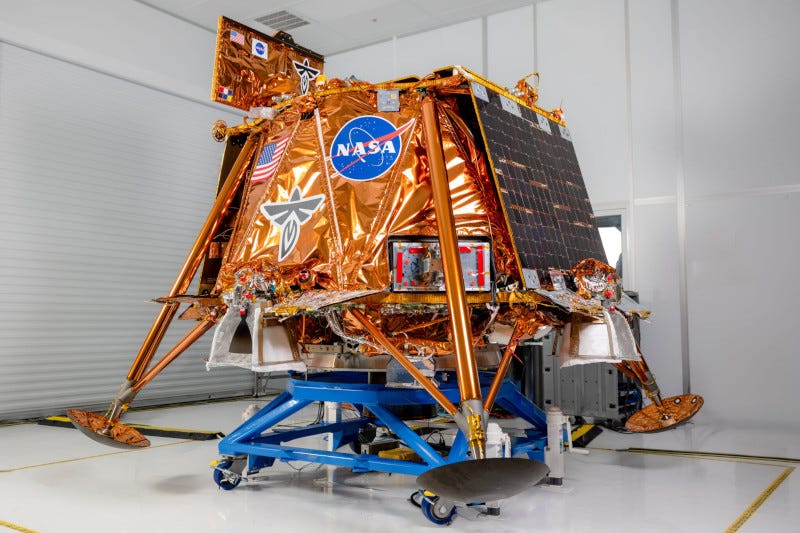President-elect Donald Trump has nominated entrepreneur Jarad Isaacman to be the next Administrator of NASA.
Isaacman has financed and led two private missions into space carrying all-civilian crews. In 2021, Isaacman was commander of the Inspiration4 mission, which was the first orbital spaceflight with an all-private crew. Then earlier this year, Isaacman was commander of the Polaris Dawn mission, which saw the first spacewalk by a private astronaut. Polaris Dawn was placed in an elliptical orbit which saw the crew travel further from the Earth than any mission since the Apollo program.
"Jared’s passion for Space, astronaut experience, and dedication to pushing the boundaries of exploration, unlocking the mysteries of the universe, and advancing the new Space economy, make him ideally suited to lead NASA into a bold new Era." Trump said in a post on X announcing the appointment.
-0-
When Isaacman steps into the administrator role at NASA, he'll inherit an Artemis program that is continuing to fall behind schedule. The agency announced this week that the Artemis II flight to orbit the Moon will not launch until sometime any earlier than April 2026, and that the Artemis III flight to land humans on the lunar surface will not take place before mid-2027.
The agency’s decision comes after an extensive investigation of an Artemis I heat shield issue showed the Artemis II heat shield can keep the crew safe during the planned mission with changes to Orion’s trajectory as it enters Earth’s atmosphere and slows from nearly 25,000 mph to about 325 mph before its parachutes unfurl for safe splashdown in the Pacific Ocean.
NASA will, however, continue stacking its SLS (Space Launch System) rocket elements, which began in November, and prepare it for integration with Orion for Artemis II.
-0-
A spacecraft that may make it to the Moon in 2025 is the Firefly Aerospace lunar lander, which will be shipped to Cape Canaveral later this month for launch integration.
Blue Ghost environmental testing was recently completed at NASA’s Jet Propulsion Laboratory (JPL) in mid-October. The regimen included comprehensive functional and behavioral testing in a flight-like environment. The testing also included vibration, acoustic, electromagnetic interference and compatibility tests to further verify the integrated lander can withstand each flight environment during launch, transit, and landing on the Moon.
Following launch and vehicle separation, Blue Ghost will begin its approximately 45-day transit to the Moon, allowing ample time to conduct robust health checks and begin payload operations on orbit. If all goes well, Blue Ghost is targeted for a landing in Mare Crisium, and its payloads will operate for a full lunar day, or 14 Earth days.
-0-
The satellite-based earth observation market size is forecast to increase by $7.60 billion, at a CAGR of 10.67% through 2028, according to a new report from Technavio. The market anticipates growth fueled by the increasing use of satellites for advanced environmental monitoring, crucial in disaster management and resource conservation efforts.
Technological advancements, including higher-resolution imaging and data analytics, bolster observation capabilities. Furthermore, the rising need to strengthen offshore communication, especially in sectors like maritime shipping and oil exploration, drives demand, driving market expansion for satellite-based earth observation solutions.
Based on type, the market has been segmented into Value Added Services (VAS) and data, with the VAS segment accounting for the largest share in this segment.
-0-
This week on The Ex Terra Podcast, we talked with Dylan Kesler, VP of AI and Data Science at Slingshot Aerospace.
In the coming years, AI agents will be paramount to enable spacecraft to operate independently and alleviate pressure on space operators, assisting with space traffic coordination, preventing space debris, real-time data processing and training to ensure the security and success of mission-critical space operations.
Kesler says that the growing number of satellites in orbit will make AI an indispensable tool for governments and private satellite operators.
"When we start to talk about tens of thousands of satellites that are doing much more in space than they have before, the amount of information becomes overwhelming, not just for one person, but for all the people we could throw at it," he said. "So AI does a great job of taking many data streams and sifting through those and building representations that are useful for people to think about."
Slingshot Aerospace recently was awarded a contract to build the presentation layer for TraCSS, the NOAA Office of Space Commerce space traffic system.
And those are some of the top stories from The Journal of Space Commerce this week. I'm Tom Patton

















